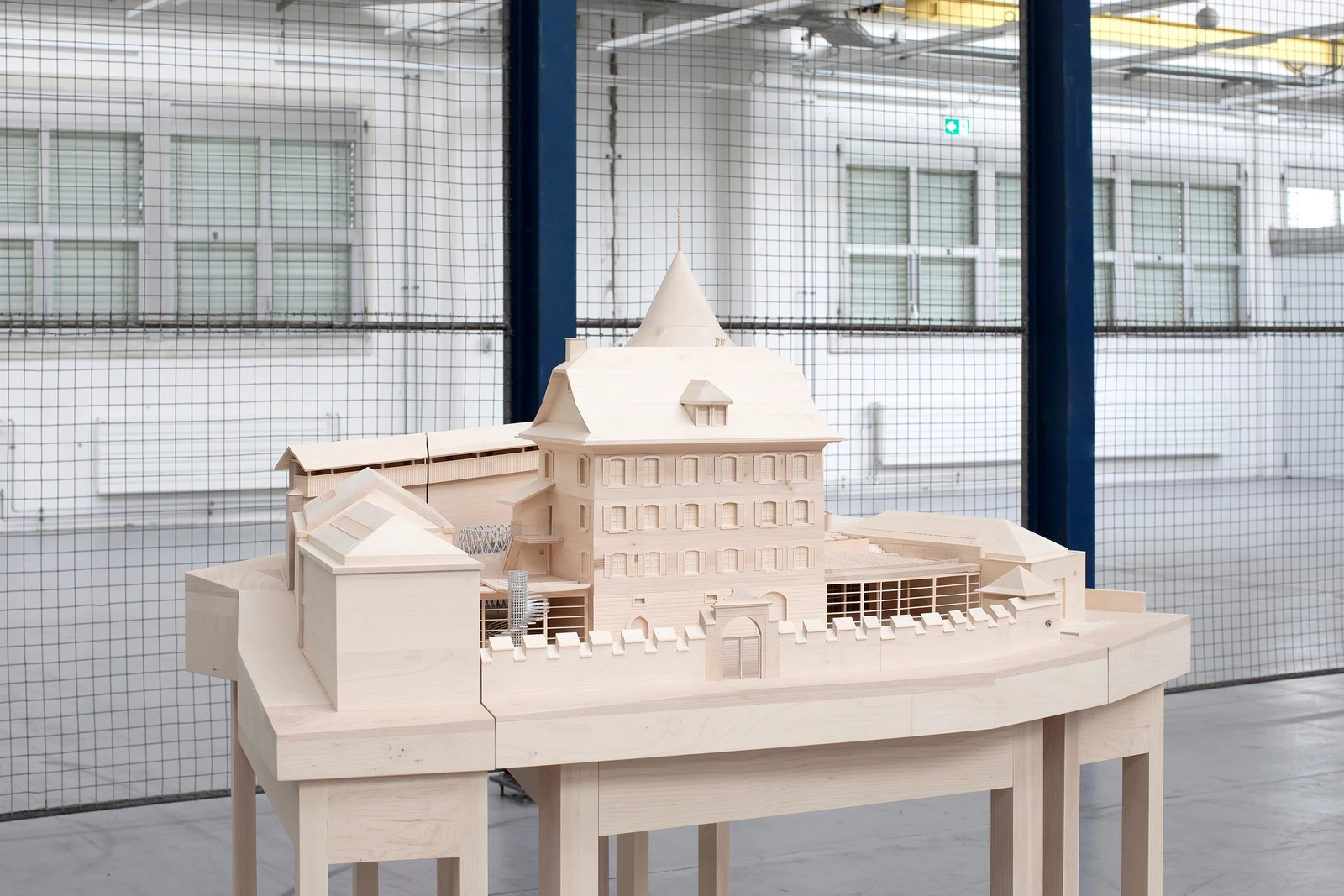






Expanding process Kunsthaus Zug
The Kunsthaus Zug is home to a significant, extensive art collection. But a lack of space means we are unable to show our holdings on a continuous basis in parallel with temporary exhibitions. Our treasures of Classical and Viennese Modernism are recognised across the world and attract visitors to Zug, so a representative selection of them ought to be able to be shown regularly. The infrastructure of the “Kaiser im Hof” building from the 16th century was converted by Franz Füeg in the early 1990s to meet the Kunsthaus Zug’s then needs. But it will have to be expanded in order to meet both the needs of today’s visitors and what is required of a museum in our time. Above and beyond this, we are linking our extension project at our well-established location with a reflection on the possible tasks of a future Kunsthaus in a rapidly changing environment. Answers need to be found to many questions. How can we treat visitors as our guests? How should we communicate with them? How might we combine a consolidation of our buildings through spatial expansion with a process of opening up, both to the outside world and to our city? How might the historical substance of the building and these new spaces relate to each other? How should we present our art collection? We are being supported in this challenging, multi-year process by the Berlin architecture firm Studio Other Spaces (SOS) and by Emilia Kabakov of New York. Olafur Eliasson and Sebastian Behmann are the founders of SOS and are very familiar with the Kunsthaus thanks to their artistic collaboration with us. They unite artistic and architectural expertise in a special way. In collaboration with the Kunsthaus Zug, the local authorities and consulting experts, SOS has developed a persuasive basic idea in several stages. It has also resulted in the platform “The Transparent Museum” as a digital extension of the Kunsthaus. It has not yet been possible to find a solution in the Daheim Park for the exhibition archive of Ilya and Emilia Kabakov that also meets historical conservation requirements. SOS’s idea is currently undergoing further development with all the stakeholders. We shall be presenting it at the Kunsthaus Zug over the course of the summer. At the same time, operational and financial aspects are being clarified. The planning process that has begun is being financed privately. For the construction itself, private funding has already variously been pledged or promised. The overall funding aims to be as broad-based as possible, with contributions from the public sector, foundations, patrons, sponsors, companies and many private individuals. Christoph Rütimann has been accompanying the structural discussions and changes at the Kunsthaus Zug with artistic works since 2010.
Studio Other Spaces writes:
As part of the “Project Collection”, its collecting model devised to promote long-term artistic collaborations, the Kunsthaus Zug began working with the artist Olafur Eliasson in 2004 with The body as brain, a series of exhibitions that turned the museum into a laboratory for exploring one’s own sense of perception. This resulted in the works The body as brain (2003-2004), The body as brain, Water tower concert (2005-2006), The body as brain, Lava floor (2007-2008) and The moving museum (2009), all of which dealt with possible transformations of the Kunsthaus building and were intended to prompt conversations about what is required of a contemporary cultural institution. Eliasson’s thesis was this: “A museum collection is not the mere sum of its objects, but a forum – a platform for conversations”. Studio Other Spaces (SOS), the office for architecture and art that Eliasson founded together with the architect Sebastian Behmann in 2014, is now working on the actual transformation of the Kunsthaus. This architectural transformation undertaken by SOS will expand on the design made by the architect Franz Füeg, who back in 1990 remodelled the building – originally from the 16th century – and thereby made the Kunsthaus into the societal institution it is today. “The Kunsthaus Zug I built is a temporary solution. It has to move on”, said Füeg in 2019 regarding the expansion plans by SOS, which will restructure and expand the existing interplay of Baroque villa, stately home, wings and park. A major gain will be a large exhibition space suitable for organising contemporary exhibitions that would be difficult to organise in the current spaces available. Enlarging the exhibition areas will make it possible in future to show both the Kunsthaus Zug’s own collection and temporary exhibitions at the same time. The manifold activities of the Kunsthaus and its layers of architectural history – the city wall, the stately home, the Huwiler Tower, the Daheim Park, the extensions both existing and planned – will be clearly defined in spatial terms and will form a new ensemble. Part of SOS’s concept also encompasses a digital component of the transformation process. The website of the Kunsthaus as a virtual representation of the institution will be incorporated with SOS’s analysis and architectural/artistic redesign of the buildings. The many different areas of activity at the Kunsthaus – such as research, dialogues with other museums, its extensive art education programme, the Friends of the Kunsthaus, and the Kunsthaus’s position as a social anchor in the city of Zug – will be taken into consideration when designing the new website, and spatially when designing the Kunsthaus extension. The process that began with Olafur Eliasson’s exhibitions 20 years ago is now being continued through numerous dialogues with the Kunsthaus team, engineers and conservation experts.